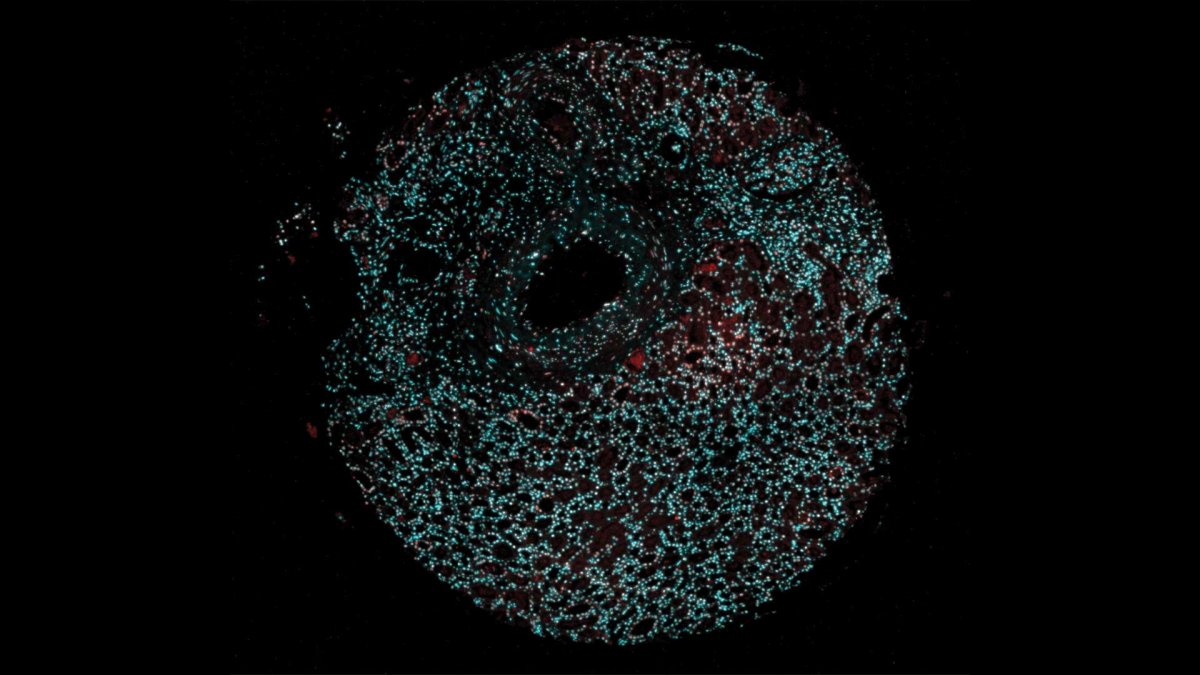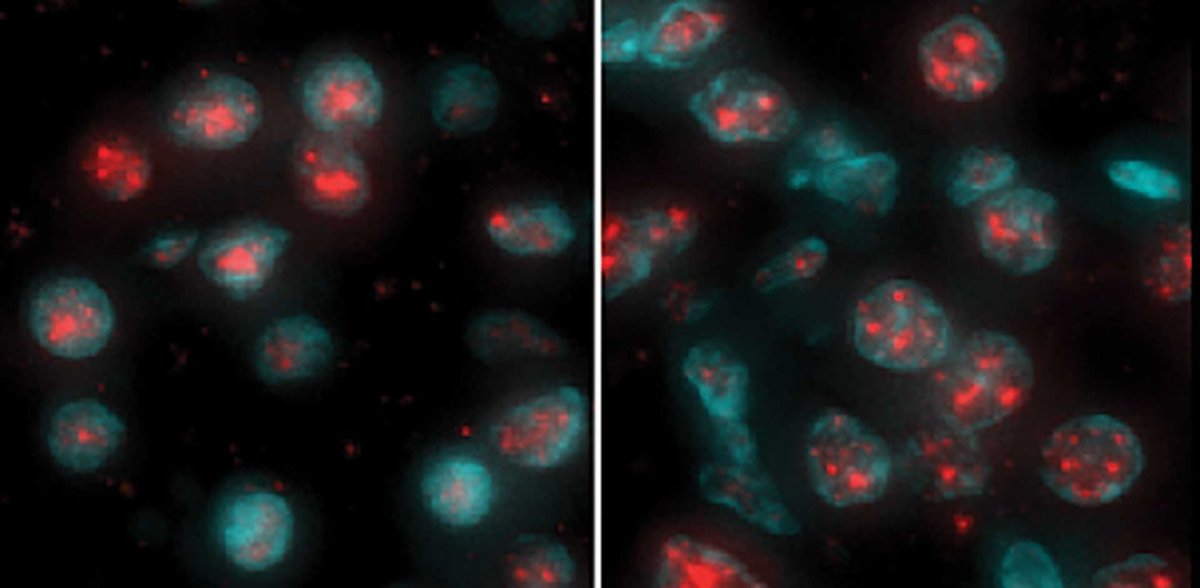Patterns of "speckles" in the heart of tumor cells could help predict how patients with a common form of kidney cancer will respond to different treatment options, according to research.
Nuclear speckles—microscopic structures found in the nucleus of a cell—were first identified more than a century ago. They are believed to intermingle with DNA and play a role in regulating gene activity.
"We found that different therapies are more or less effective depending on how the speckles look," said Professor Katherine Alexander of the Cold Spring Harbor Laboratory in New York in a statement.
"This means potentially if a patient comes in with a normal or aberrant speckle state, they might be more responsive to one drug or another. Of course, more research needs to be done."

In their study, Alexander and her colleagues analyzed nuclear speckles in more than 20 different types of cancer—including those of the breast, kidney and skin.
The team identified two distinct patterns in how the speckles appear in cancer cells.
The first largely resembles that seen in healthy tissues, with the structures concentrated near the center of the nucleus. In the "aberrant" pattern, however, speckles are more dispersed.
In the most common form of kidney cancer seen in adults—clear cell renal cell carcinoma, or "ccRCC," for short—the study found a correlation between the pattern of the speckles in the cancer cells and the success of different cancer treatments.

"How these signatures affect patient outcomes remains a mystery for now," said Professor Shelley Berger, paper co-author and University of Pennsylvania epigeneticist, in a statement.
The team is investigating one possible lead, which comes in the form of a protein called HIF-2𝛼 that is typically overactive in ccRCC cases.
"The search for answers may lead to more personalized treatments. This discovery offers a new starting point in ccRCC," Berger added, pointing to the potential for speckles to help doctors choose the best treatment option for a given patient.
Alexander concluded: "That's huge, because cancer therapy has a lot of horrible side effects. To be able to tell a patient 'Your tumor looks like this, so we think this drug will work better than this drug,' is something we really need."
Do you have a tip on a science story that Newsweek should be covering? Do you have a question about volcanoes? Let us know via science@newsweek.com.
Reference
Alexander, K. A., Yu, R., Skuli, N., Coffey, N. J., Nguyen, S., Faunce, C. L., Huang, H., Dardani, I. P., Good, A. L., Lim, J., Li, C. Y., Biddle, N., Joyce, E. F., Raj, A., Lee, D., Keith, B., Simon, M. C., & Berger, S. L. (2025). Nuclear speckles regulate functional programs in cancer. Nature Cell Biology. https://doi.org/10.1038/s41556-024-01570-0



















:quality(85):upscale()/2024/04/24/878/n/3019466/36c5693c662965c5d1ce91.72473705_.jpg)
 English (US) ·
English (US) ·